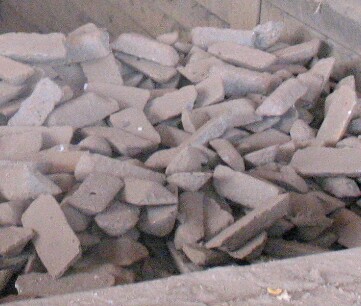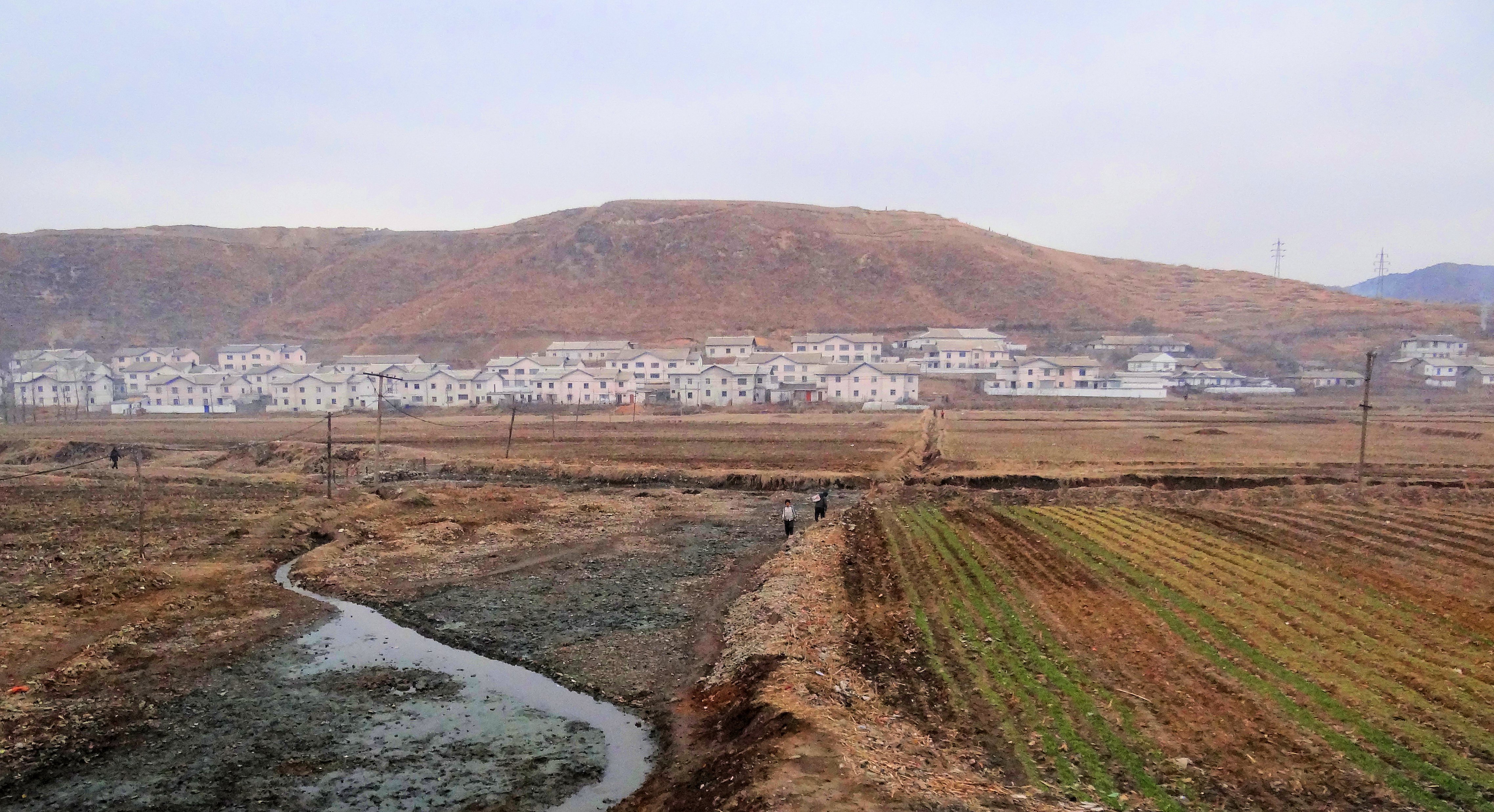|
Posan Line
The Posan Line is an electrified freight-only railway line of the Korean State Railway in South P'yŏngan Province, North Korea from Kangsŏ at the junction of the P'yŏngnam and Taean Lines, to Posan.Kokubu, Hayato, 将軍様の鉄道 (Shōgun-sama no Tetsudō) Services The April 13 Ironworks at Posan produces pig iron Pig iron, also known as crude iron, is an intermediate product of the iron industry in the production of steel which is obtained by smelting iron ore in a blast furnace. Pig iron has a high carbon content, typically 3.8–4.7%, along with sil ..., all of which is shipped to the Ch'ŏllima Steel Complex a short distance away at Kangsŏn on the P'yŏngnam Line, whilst using raw materials received from all over the western part of the country. Route A yellow background in the "Distance" box indicates that section of the line is not electrified. References Railway lines in North Korea Standard gauge railways in North Korea {{NorthK ... [...More Info...] [...Related Items...] OR: [Wikipedia] [Google] [Baidu] |
Passenger Rail Terminology
Various terms are used for passenger railway lines and equipment; the usage of these terms differs substantially between areas: Rapid transit A rapid transit system is an electric railway characterized by high speed (~) and rapid acceleration. It uses passenger railcars operating singly or in multiple unit trains on fixed rails. It operates on separate right-of-way (transportation), rights-of-way from which all other vehicular and foot traffic are excluded (i.e. is fully grade separation, grade-separated from other traffic). It uses sophisticated railway signalling, signaling systems, and railway platform height, high platform loading. Originally, the term ''rapid transit'' was used in the 1800s to describe new forms of quick urban public transportation that had a Right-of-way (railroad), right-of-way separated from street traffic. This set rapid transit apart from horsecars, trams, streetcars, bus, omnibuses, and other forms of public transport. A variant of the term, ''mass ... [...More Info...] [...Related Items...] OR: [Wikipedia] [Google] [Baidu] |
April 13 Ironworks
The April 13 Ironworks, one of North Korea's primary metal industries, is an ironworks in Posan-dong, Ch'ŏllima-guyŏk, Namp'o. Originally opened during the Japanese colonial era, it was nationalised after the partition of Korea and has been renovated several times, in the 1960s and again in the 1980s. As of 1997 it has a production capacity of hundreds of thousands of tons of pig iron, of which all is shipped to the Ch'ŏllima Steel Complex in nearby Kangsŏn. The facility is served by the Korean State Railway via Posan Station on the P'yŏngnam Line The P'yŏngnam Line is an electrified standard-gauge trunk line of the Korean State Railway in North Korea, linking P'yŏngyang with the port city of Namp'o and the hot springs at P'yŏngnam Onch'ŏn. The length of the line is .Kokubu, Hayato, .... References {{reflist Metal companies of North Korea ... [...More Info...] [...Related Items...] OR: [Wikipedia] [Google] [Baidu] |
Chollima Steel Complex
The Ch'ŏllima Steel Complex in Kangch'ŏl-dong, Ch'ŏllima-guyŏk, Namp'o is one of North Korea's largest steel mills with an annual production capacity in the millions of tons. Originally opened during the Japanese colonial era as the Kangsŏn Steel Works, it was nationalised after the partition of Korea and has since been expanded several times. Currently, there are facilities for the production of steel and other alloys, steel rods, pipes and other metal products, and a facility for the production of large forgings and castings, along with a test and analysis centre. The production facility is equipped with electric furnaces, crushing and rolling mills, 6- and 10,000 tonne presses, oxygen separators and continuous mills. The complex also features metallurgical academies, cultural centres, childcare facilities, clinics, nightclubs and nursing homes. The complex was awarded the Order of Kim Il-sung. The facility is served by the Korean State Railway via Kangsŏn on the P' ... [...More Info...] [...Related Items...] OR: [Wikipedia] [Google] [Baidu] |
Pig Iron
Pig iron, also known as crude iron, is an intermediate product of the iron industry in the production of steel which is obtained by smelting iron ore in a blast furnace. Pig iron has a high carbon content, typically 3.8–4.7%, along with silica and other constituents of dross, which makes it brittle and not useful directly as a material except for limited applications. The traditional shape of the molds used for pig iron ingots is a branching structure formed in sand, with many individual ingots at right angles to a central channel or "runner", resembling a litter of piglets being nursed by a sow. When the metal had cooled and hardened, the smaller ingots (the "pigs") were simply broken from the runner (the "sow"), hence the name "pig iron". As pig iron is intended for remelting, the uneven size of the ingots and the inclusion of small amounts of sand cause only insignificant problems considering the ease of casting and handling them. History Smelting and producing ... [...More Info...] [...Related Items...] OR: [Wikipedia] [Google] [Baidu] |
North Korea
North Korea, officially the Democratic People's Republic of Korea (DPRK), is a country in East Asia. It constitutes the northern half of the Korean Peninsula and shares borders with China and Russia to the north, at the Yalu (Amnok) and Tumen rivers, and South Korea to the south at the Korean Demilitarized Zone. North Korea's border with South Korea is a disputed border as both countries claim the entirety of the Korean Peninsula. The country's western border is formed by the Yellow Sea, while its eastern border is defined by the Sea of Japan. North Korea, like its southern counterpart, claims to be the legitimate government of the entire peninsula and adjacent islands. Pyongyang is the capital and largest city. In 1910, Korea was annexed by the Empire of Japan. In 1945, after the Japanese surrender at the end of World War II, Korea was divided into two zones along the 38th parallel, with the north occupied by the Soviet Union and the south occupied by the U ... [...More Info...] [...Related Items...] OR: [Wikipedia] [Google] [Baidu] |
Railway
Rail transport (also known as train transport) is a means of transport that transfers passengers and goods on wheeled vehicles running on rails, which are incorporated in Track (rail transport), tracks. In contrast to road transport, where the vehicles run on a prepared flat surface, rail vehicles (rolling stock) are directionally guided by the tracks on which they run. Tracks usually consist of steel rails, installed on Railroad tie, sleepers (ties) set in track ballast, ballast, on which the rolling stock, usually fitted with metal wheels, moves. Other variations are also possible, such as "slab track", in which the rails are fastened to a concrete foundation resting on a prepared subsurface. Rolling stock in a rail transport system generally encounters lower friction, frictional resistance than rubber-tyred road vehicles, so passenger and freight cars (carriages and wagons) can be coupled into longer trains. The rail transport operations, operation is carried out by a ... [...More Info...] [...Related Items...] OR: [Wikipedia] [Google] [Baidu] |
Taedong River
The Taedong River ( Chosŏn'gŭl: ) is a large river in North Korea. The river rises in the Rangrim Mountains of the country's north where it then flows southwest into Korea Bay at Namp'o.Suh, Dae-Sook (1987) "North Korea in 1986: Strengthening the Soviet Connection" ''Asian Survey'' 27(1): pp. 56-63, page 62 In between, it runs through the country's capital, Pyongyang. Along the river are landmarks such as the Juche Tower and Kim Il-sung Square. The river is 439 km or 272.7 mi in length, and is generally deep. It is the fifth-longest river on the Korean peninsula and the second-longest in North Korea. Pyongyang is approximately 110 km upstream from the mouth, Sunchon 192 km upstream, and Taehŭng 414 km upstream. Because of its depth, it is widely used for river transport; it is navigable by large ships up to 65 km inland, although most commercial traffic stops at Songrim. History The kingdom of Koguryo was founded on its shores. Many archeological si ... [...More Info...] [...Related Items...] OR: [Wikipedia] [Google] [Baidu] |
Kumsong Tractor Factory
The Kŭmsŏng Tractor Factory, located in Kiyang-dong, Kangsŏ-guyŏk, Namp'o, is North Korea's largest manufacturer of tractors, bulldozers, and other agricultural equipment. Employing around 10,000 workers, the factory has a floor area of on a total area of . Peak production capacity is 10,000 tractors per year. The factory's current products include the ''Ch'ŏllima 28'' , ''Ch'ŏllima 32'' , ''Ch'ŏllima 40'' , ''P'ungnyŏn 75'' , ''Sonyŏn'' and ''Ch'ŏllima 2000'' tractors, and the ''P'ungnyŏn'' bulldozer. As of 2017, the factory was producing the new 80-hp ''Ch'ŏllima 804'' tractor model. Claims have been made this factory also produces TEL mobile missile platforms. The facility is served by the Korean State Railway via Kangsŏ Station on the P'yŏngnam Line. History The plant was opened in 1954, rebuilt from the ruins of a chemical fertiliser plant destroyed during the Korean War, producing various agricultural implements. The first tractor, the Ch'ŏllima 28'', e ... [...More Info...] [...Related Items...] OR: [Wikipedia] [Google] [Baidu] |
South Pyongan Province
South Pyongan Province (Phyŏngannamdo; ) is a province of North Korea. The province was formed in 1896 from the southern half of the former Pyongan Province, remained a province of Korea until 1945, then became a province of North Korea. Its capital is Pyongsong. Geography The province is bordered by North Pyongan and Chagang Provinces to the north, South Hamgyong and Kangwon Provinces to the east and southeast and North Hwanghae Province and Pyongyang to the south. The Yellow Sea and Korea Bay are located to the west. Administrative divisions South P'yŏngan is divided into 1 special city (''tŭkpyŏlsi''); 5 cities (''si''); 16 counties (''kun''); and 3 districts (1 ''ku'' and 2 ''chigu''). Its administrative divisions are: Cities * Nampo Special City (남포특별시/; created in 2010) * Pyongsong (평성시/; the provincial capital, established December 1969) * Anju (안주시/; established August 1987) * Kaechon (개천시/; established August 1990) * Sunchon-s ... [...More Info...] [...Related Items...] OR: [Wikipedia] [Google] [Baidu] |
Taean Line
The Taean Line is an electrified standard-gauge secondary line of the Korean State Railway in Namp'o-t'ŭkpyŏlsi, North Korea, running from Kangsŏ in Kangsŏ-guyŏk on the P'yŏngnam Line to Taean Freight Station in Taean-guyŏk.Kokubu, Hayato, 将軍様の鉄道 (Shōgun-sama no Tetsudō), History The Taean Line was originally built during the Japanese occupation of Korea by the Chosen Government Railway. After the defeat of Japan in the Pacific War and the subsequent partition of Korea, the entirety of the line, being north of the 38th parallel, was located in the Soviet zone of occupation; on 10 August 1946, the Provisional People's Committee for North Korea nationalised all railways within its jurisdiction, including the Taean Line, and it has since been operated by the Korean State Railway. Services All freight heading to and from the Taean Machine Complex located in Taean moves via this line. Steel arrives there from the Kimch'aek Iron & Steel Complex, the ... [...More Info...] [...Related Items...] OR: [Wikipedia] [Google] [Baidu] |
Pyongnam Line
The P'yŏngnam Line is an electrified standard-gauge trunk line of the Korean State Railway in North Korea, linking P'yŏngyang with the port city of Namp'o and the hot springs at P'yŏngnam Onch'ŏn. The length of the line is .Kokubu, Hayato, 将軍様の鉄道 (Shōgun-sama no Tetsudō), The P'yŏngnam Line serves as a connection between the various trunk lines starting at P'yŏngyang that serve the north and east of the country with the lines in the southwestern part of North Korea by means of a connection to the Sŏhae Kammun Line (West Sea Barrage Line). It connects to the Ryonggang Line and the Taean Line,The traffic and geography in North KoreaP'yŏngnam Line accessed 14 December 2017. (in Korean) as well as to the P'yŏngyanghwajŏn Line, the Chamjilli Line, the Posan Line, the Tojiri Line, the Namp'o Port Line, and, formerly, the Namdong Line. History The P'yŏngnam Line was originally built as two separate lines by two separate railway companies - the P'yŏ ... [...More Info...] [...Related Items...] OR: [Wikipedia] [Google] [Baidu] |



